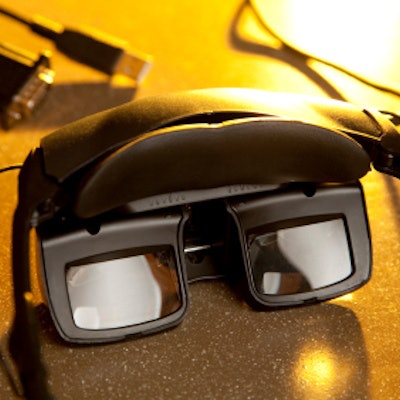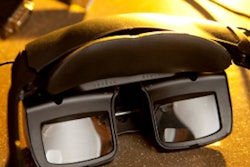
A virtual reality (VR) headset that uses information from multidetector CT imaging shows promise for helping interventional radiologists tailor transcatheter aortic valve replacement (TAVR) procedures, Spanish researchers have found.
Being able to "transport the user inside the human body" ahead of surgery translates to better procedure planning, wrote a group led by Dr. Xavier Ruyra of Quironsalud Teknon Heart Institute in Barcelona. The investigators' work was published October 18 in Interactive CardioVascular and Thoracic Surgery.
"In almost half the cases [in our study] the consideration of new information provided by the virtual reality models led the team to redesign the procedure plan," it noted. "In all procedures, this additional information increased the confidence of the [surgical team] during implantation."
TAVR is a procedure used to mitigate aortic valve stenosis and is performed by interventional radiologists and cardiac surgeons. Patients referred for TAVR are typically imaged before the procedure with multidetector CT; this data then undergoes a 3D reconstruction process to visualize the aortic valve access route and the "landing zone" for the artificial valve to be implanted using particular software (such as that developed by Dutch firm 3mensio Medical Imaging).
The images can then be viewed with a VR headset displaying a computer-generated "environment" that gives surgeons an "unlimited view of the anatomy from every angle in an immersive experience with high fidelity and accuracy," the team explained.
"In recent years, there [has been] growing interest in 3D-printing models to enhance the outcomes of complex cardiovascular cases including TAVR procedures ... but the interaction with the model is limited," the authors wrote. "The virtual reality allows [us] to take a step forward and cross the barrier into a different universe where we [can] interact with the anatomy."
Ruyra and colleagues conducted a study that included 11 patients with severe aortic valvular disease recommended for TAVR between May 2020 and May 2021. All underwent CT to acquire images of their heart anatomy and to determine the access route and valve landing area. Using the CT data collected for each patient, the team built a virtual platform using Spanish firm Techer Team's VisuaMed software that incorporated patients' clinical information and a virtual model of their anatomy.
Each patient served as their own control, first being evaluated by imaging techniques such as echocardiography, angiography, and multidetector CT, then again with the VR models Ruyra and colleagues created. Routine imaging data for all 11 cases were successfully converted to the virtual reality model, the group noted.
All of the patients came through the procedure with no major complications, although two had mild paravalvular leaks. The average hospital stay was about four days, including an average of 18 hours in the intensive care unit.
The VR information modified surgeons' implant strategy in 45.4% of the cases. Ruyra and colleagues described a few specific cases:
- In two cases, the VR model showed that the Valsalva sinuses were wide enough for the implant and TAVR could be performed without the need for additional coronary protection.
- In another case -- a 74-year-old woman with severe aortic stenosis and prior mitral valve replacement -- the VR model showed that the surgeons should move the implant higher in the valve to avoid future migration.
- One patient was initially referred for TAVR, but after surgeons reviewed data from the VR model was referred to surgery for valve replacement.
Although the study cohort was small, the findings are promising, according to the researchers.
"Our study suggests that in TAVR patients with complex scenarios, the immersive experience that virtual reality provides could contribute to achieving the best possible plan for each patient," they concluded.


















